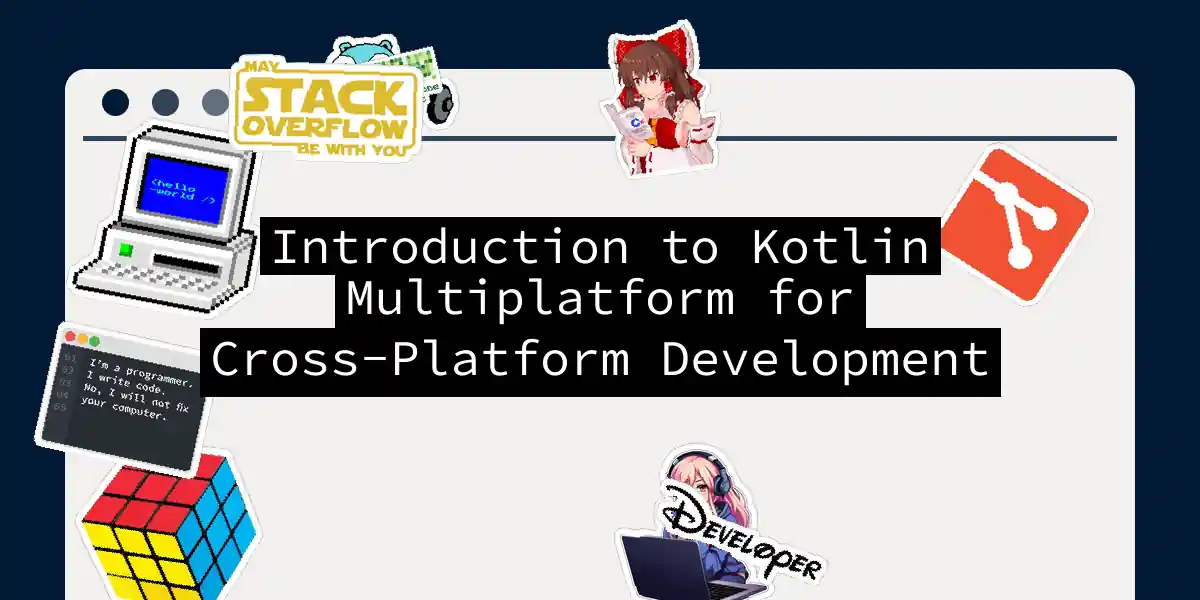The Quest for the Holy Grail of Cross-Platform Development
In the realm of software development, the dream of writing once and running everywhere has been a longstanding quest. With the advent of Kotlin Multiplatform, this dream is now more achievable than ever. In this article, we’ll delve into the world of Kotlin Multiplatform, exploring its capabilities, use cases, and how it can revolutionize your cross-platform development endeavors.
What is Kotlin Multiplatform?
Kotlin Multiplatform is a technology developed by JetBrains that allows you to share code across multiple platforms, including Android, iOS, desktop (Windows, macOS, Linux), and web. This means you can write your application’s core logic once and reuse it across different platforms, significantly reducing development time and effort[1][3][5].
Key Concepts and Use Cases
Mobile Applications
One of the most compelling use cases for Kotlin Multiplatform is in mobile app development. With Kotlin Multiplatform Mobile (KMM), you can share code between Android and iOS, implementing features such as networking, data storage, data validation, analytics, and computations. This shared codebase can be used to build cross-platform mobile applications, reducing the need to duplicate effort and ensuring consistency across both platforms[1][3][4].
Multiplatform Libraries
Kotlin Multiplatform is not just limited to application development; it also enables the creation of multiplatform libraries. These libraries can contain common code and platform-specific implementations for JVM, web, and native platforms. Once published, these libraries can be used as dependencies in other cross-platform projects, further enhancing code reuse and modularity[1][2][3].
Desktop Applications
Compose Multiplatform, a part of the Kotlin Multiplatform ecosystem, allows you to share user interfaces (UIs) across desktop platforms like Windows, macOS, and Linux. This makes it possible to create fully cross-platform desktop applications with a unified UI, leveraging the power of Kotlin’s declarative UI framework[1][3].
Code Sharing Mechanisms
Kotlin Multiplatform provides several mechanisms to share code across different platforms:
- Common Code: You can maintain a single codebase for the application logic that can be shared among all platforms. This code is placed in the
commonMainsource set and cannot use platform-specific APIs[2]. - Intermediate Source Sets: For sharing code among a subset of targets, intermediate source sets like
appleMain(for Apple platforms) can be used. This allows you to reuse code in similar platforms without duplicating effort[2]. - Expected and Actual Declarations: To access platform-specific APIs from shared code, you can use the
expectandactualdeclarations. This mechanism allows you to define a function or class in the common code and provide platform-specific implementations in the respective target source sets[2][4].
Getting Started
To get started with Kotlin Multiplatform, you need to set up your project structure. Here’s a step-by-step guide:
Create a New Project: Use the Kotlin Multiplatform project template in your IDE or create a new project manually by setting up the necessary source sets (
commonMain,jvmMain,iosMain, etc.) and dependencies[1][2].Define Targets: Specify the targets for your project, such as JVM, iOS, and Android. Each target has its own source set and dependencies[2].
Write Shared Code: Place your shared logic in the
commonMainsource set. This code should not use platform-specific APIs[2].Use Expected and Actual Declarations: If you need to access platform-specific APIs, use the
expectandactualdeclarations to define the interface in the common code and provide the actual implementation in the target-specific source sets[2][4].
Adding Dependencies and Configuring Compilations
Kotlin Multiplatform projects can depend on external libraries and other multiplatform projects. You can add dependencies to the common source set or to specific target source sets. Kotlin automatically resolves and adds the appropriate platform-specific parts to other source sets[2].
For configuring compilations, you can set up different compilations for production, testing, or custom purposes. This includes modifying compiler options, managing dependencies, and configuring interoperability with native languages[2].
Building Final Binaries
By default, a target is compiled to a .klib artifact. However, Kotlin Multiplatform provides mechanisms to build final native binaries such as executable binaries, shared and static libraries, or Objective-C frameworks. You can also create universal (fat) frameworks and XCFrameworks for iOS integration[2].
Real-World Applications and Benefits
Several companies have already leveraged the power of Kotlin Multiplatform to enhance their development processes. For instance, McDonald’s, Netflix, and VMware have used KMP to share code across multiple platforms, reducing development time and improving code reusability[4].
The benefits of using Kotlin Multiplatform are numerous:
- Reduced Development Time: By sharing code across platforms, you can save up to 30-50% of development time[3].
- Code Reusability: You can reuse your Kotlin code and expertise, making the transition to KMP less risky compared to other technologies[4].
- Flexibility: KMP allows you to share as much or as little code as you want, making it easy to integrate with existing native applications[3].
- Native Performance: KMP retains the benefits of native programming, ensuring great performance and full access to platform SDKs[1].
Conclusion
Kotlin Multiplatform is a powerful tool in the arsenal of any developer looking to venture into cross-platform development. With its ability to share code across multiple platforms, flexible code sharing mechanisms, and seamless integration with native APIs, KMP is set to revolutionize the way we develop software.
So, the next time you’re faced with the daunting task of developing an application that needs to run on multiple platforms, remember that Kotlin Multiplatform is here to make your life easier. It’s time to write once and run everywhere, and with KMP, that’s no longer just a dream, but a reality.
